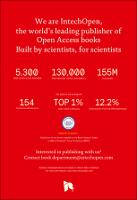Chapter Noninvasive Acquisition of the Aortic Blood Pressure Waveform
Author(s)
Priidel, Eiko
Annus, Paul
Kõiv, Hip
Pesti, Ksenija
Min, Mart
Language
EnglishAbstract
Blood pressure reflects the status of our cardiovascular system. For the measurement of blood pressure, we typically use brachial devices on the upper arm, and much less often, the radial devices with pressure sensors on the wrist. Medical doctors know that this is an unfortunate case. The brachial pressure and even more, the radial pressure, both are poor replacements for the central aortic pressure (CAP). Moreover, the devices on the market cannot provide continuous measurements 24 h. In addition, most of the ambulatory and wearable monitors do not enable acquisition of the blood pressure curves in time. These circumstances limit the accuracy of diagnosing. The aim of this chapter is to introduce our experiments, experiences and results in developing the wearable monitor for central aortic blood pressure curve by using electrical bioimpedance sensing and measurement. First, electronic circuitry with embedded data acquisition and signal processing approaches is given. Second, finding appropriate materials, configurations and placements of electrodes is of interest. Third, the results of modelling and simulations are discussed for obtaining the best sensitivity and stability of the measurement procedures. Finally, the discussion on the provided provisional experiments evaluates the obtained results. The conclusions are drawn together with the need for further development.
Keywords
blood pressure waveform, central aortic pressure, cardiovascular system, medical indications, diagnosing, electrical impedance, bioimpedance-based sensing, modelling, simulation, signal processing, transfer function, noninvasive measurements, electrodes, wearable devicesDOI
10.5772/intechopen.86065Publisher
InTechOpenPublisher website
https://www.intechopen.com/Publication date and place
2019Classification
Technology: general issues


 Download
Download